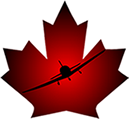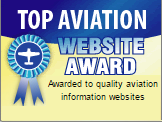 |
|
Landing: Part I, the Approach“A good landing begins with a good approach.” --Wits Flying School, Johannesburg, South Africa-- Learning to land an aircraft is probably the single most challenging aspect of any pilot’s flight training program. It is also one of the most potentially exciting phases of flight. According to National Transportation Safety Board statistics, 45% of air accidents reported between 1992 and 2001 occurred during the takeoff and landing phases of flight. The AOPA Air Safety Foundation’s 1996 Nall Report states “Takeoff and landing account for about three percent of the time spent in a typical cross-country flight, but 47 percent of all accidents occur during these phases.” The TSB annual report for 2004, the most recent compilation, tells us that accidents during the landing phase of flight accounted for about 36% of the total air accidents for that year. Simply put, the landing process consists of four aspects or phases: the approach, the flair, the touchdown and the landing roll. Today, we’ll focus on the approach phase of the landing process. As with any aircraft manoeuvre, there are five steps to consider and perform: safety; set-up; entry; recognition/maintenance; and recovery. Safety depends on knowing and understanding the factors that may pose potential difficulties; set-up defines the airspeed, altitude and configuration in which the aircraft must be established prior to the manoeuvre; entry defines the beginning of the manoeuvre; recognition/maintenance defines how we know the manoeuvre is correct and what we need to do to keep things progressing in a successful manner; recovery defines the ending of the manoeuvre. In this case, approach to landing, recovery will involve either entry to the flair phase of the landing process or an overshoot procedure if the landing must be aborted. SAFETY: Approach begins long before you turn final. Much of the planning process for an approach occurs even prior to walking out to the hanger or tie down area for your pre-flight inspection. Even if you are very familiar with your destination aerodrome or will be remaining in the circuit at your home field, take the necessary time to consult available resource materials. Your CFS provides excellent information on the approach and traffic pattern; circuit height; runway length, surface and orientation; hazards; communications procedures; and cautions or special procedures that must be observed. METARs, TAFs and PIREPs provide information regarding environmental factors you will likely encounter. NOTAMs provide information concerning specific conditions at the aerodrome that may affect your landing; for example, wind shear, hazard lights or navigation aids that may not be functioning, runway thresholds or taxiways that may be obstructed, displaced or unavailable, special events that may be scheduled that will affect traffic flow. I once had the adventure of flying into a small aerodrome in the midst of holding a model aeroplane rally. 150 people stood along the runway edge and watched me make a somewhat less than perfect landing. The odds of executing a successful landing can be sadly reduced by poor planning or poor execution of the approach phase of the process. SET-UP: As you near your destination aerodrome, it’s an excellent idea to begin reducing power and altitude and slowing down prior to circuit entry. This can be carried out in conjunction with descent to an appropriate approach altitude. Just as it is important to properly allow your engine to develop correct operating temperature prior to taxi and takeoff, it is also important to give your engine adequate time to begin the cooling process in a controlled manner. With reduced airspeed and engine noise, you will also have the benefit of more available brain cells to apply to the challenge of landing. Slowing the problem down can often make the whole process easier, calmer, and, thus, more successful. Complete your pre-landing checks while you have ample time and leisure. The more complex the aircraft you are flying the more critical this initial preparation for approach becomes. Approach to the airport will begin several miles prior to arrival. Blasting through the approach phase of landing can result in some potentially very dangerous and/or expensive adventures. Organize your workload so you will not be rushed or harried during this very intense aspect of flight. Executing a perfect touchdown with the gear up, for example, is not normally considered a desirable outcome. Enter the circuit pattern in a correct and safe manner. If you have taken the time on the ground prior to your flight to know and understand the traffic pattern and the options available to you, this part of the process becomes much simpler. A well thought-out plan allows a pilot to pay more attention to his or her immediate environment, to watch for potentially conflicting traffic, and to identify any potentially helpful landmarks or dangerous hazards. Trying to consult the CFS while approaching a new aerodrome at 120 kts. does not simplify the problem. ENTRY: Stabilize your airspeed and altitude, identify the required reference points on the ground, compensate as required for any wind drift, and complete any pre-landing checks that may be required to prepare for landing. With a carbureted engine, carburetor heat will normally be applied prior to reducing power for base leg. Deploy appropriate flaps progressively. RECOGNITION/MAINTENANCE: Final approach is a very important aspect of the successful landing. A controlled, stabilized final approach solves something on the order of 85% of the landing problem. Unless your final approach is under control, stabilized, and correct, the difficulties of flair and touchdown will be magnified many, many times. In the bad, old days when aircraft engines were just about as likely to fail as not, aspiring pilots were typically taught to land using a power-off, gliding approach. We still teach this as an emergency technique and it is an included exercise on the CPL flight test, but is not a “normal” landing procedure. Final approach ideally will be conducted with appropriate power, flap, and a stabilized rate of descent. Consult your aircraft’s POH to determine the recommended speeds. Compensate, as necessary, for gusty, crosswind, or turbulent conditions. Typically, a light, training aircraft will approach the runway on final at a descent rate of between 300 and 500’/min. A normal glide slope to an unobstructed runway will be on the order of 3˚. The more consistent your approaches, the easier your landings will be. You will be looking at a similar picture each time; thus, you will find you have to make fewer and simpler decisions. Where you look during approach, particularly during final approach, can be of great help or, on the other extreme, can make the whole process very challenging. Visual fixation can make your approach very difficult, particularly on short final. The accuracy of our depth perception is greatly diminished when the point or object we are looking at is approaching at relatively high speed. Initially, on final approach, it is an excellent plan to identify your round-out or flair point, the point at which our flair will commence. Many pilots will use “the numbers”, the runway identifier numbers, as a helpful round-out point. However, if you are operating out of an airport equipped with VASI or PAPI lights, you will find you are rounding out considerably farther down the runway than the runway identifier. Adjust your rate of descent as required on final approach so the flair point remains stationary at about the same height as you would see the horizon during cruise flight. On most training aircraft, this will be found about 1/3 of the way up the windscreen depending you how tall you are. Use the appropriate combination of rudder and aileron inputs to maintain the aircraft’s alignment with the centreline throughout the approach. Maintain airspeed with appropriate elevator inputs and trim. Power will control your rate of sink. Once you have achieved the glide path, pitch and power input changes will be very minimal. We are trying to achieve a stabilized approach where the aircraft rather than the pilot will do most of the work. Try to make any significant changes in airspeed, attitude, and rate of descent as early in the final approach as possible. Establish the stabilized approach as soon as you can and maintain it all the way down to the flair. Successful landings do not “drop out of the sky”. They should not be dependent on luck. Good planning, organized and procedural flying, management of workload, and a stabilized approach established early will contribute greatly to a successful landing.
|


